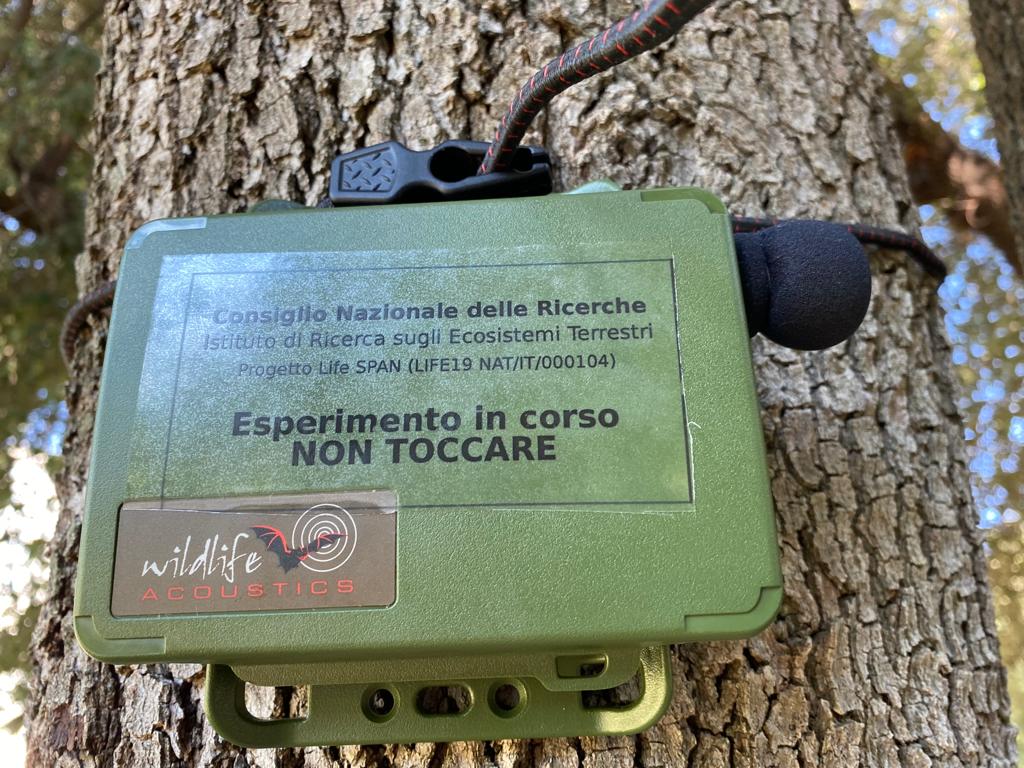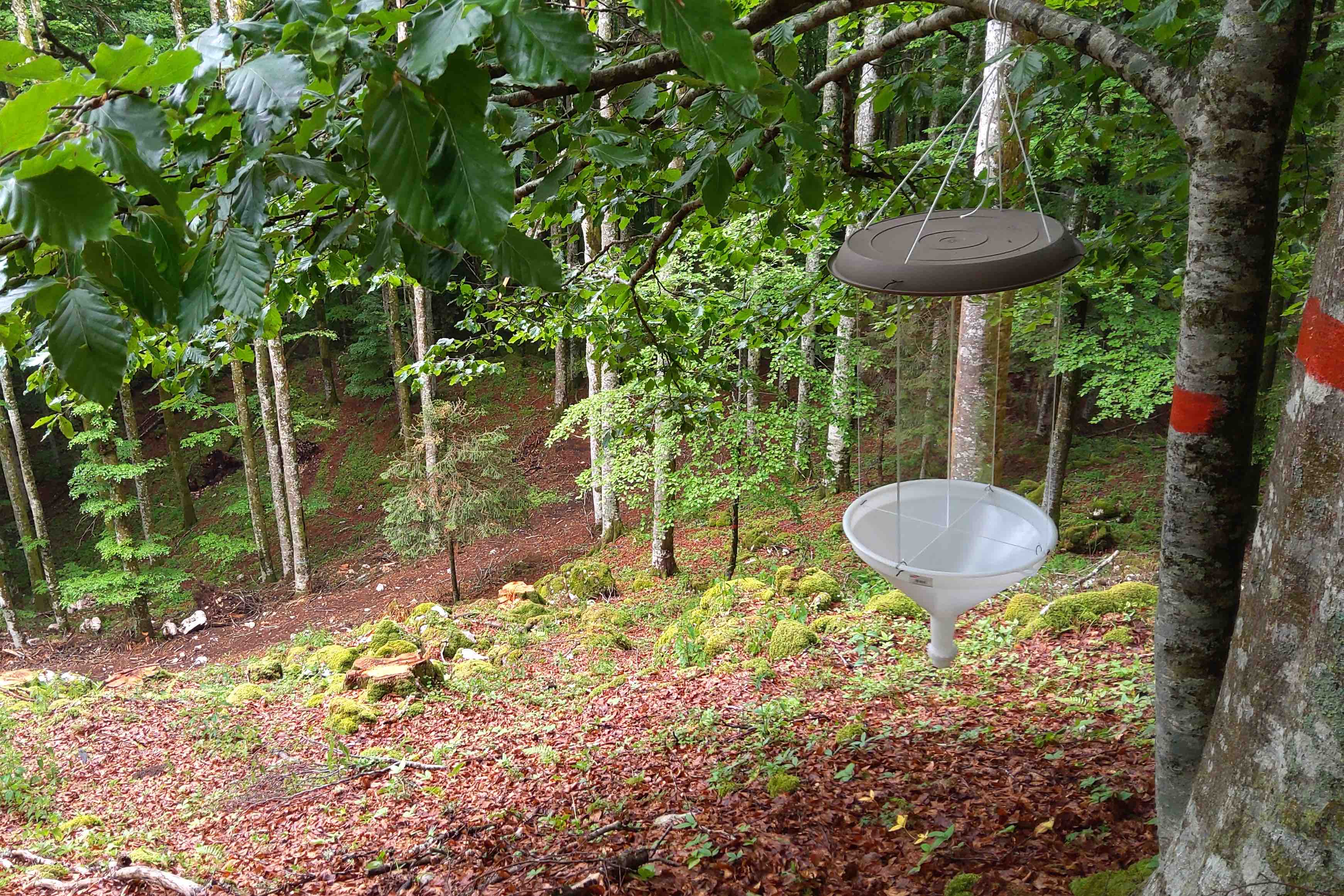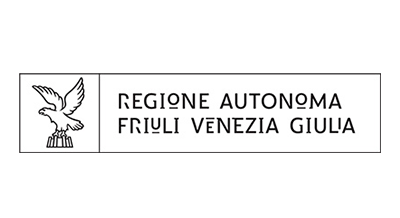In the demonstration area of Cansiglio the first 8 SHS (Saproxylic Habitat Sites) foreseen by the project have been realized. Having completed the pro-senescence interventions, to increase deadwood presence, microhabitats, structural diversity and gaps, we moved to install devices for the monitoring of insects, bats and birds.
The objective is to verify how the presence of the target species varies following the creation, and subsequent evolution, of SHS. For this reason, monitoring will continue over time, also involving some “control sites” where the devices have been placed in areas not interested by the interventions.
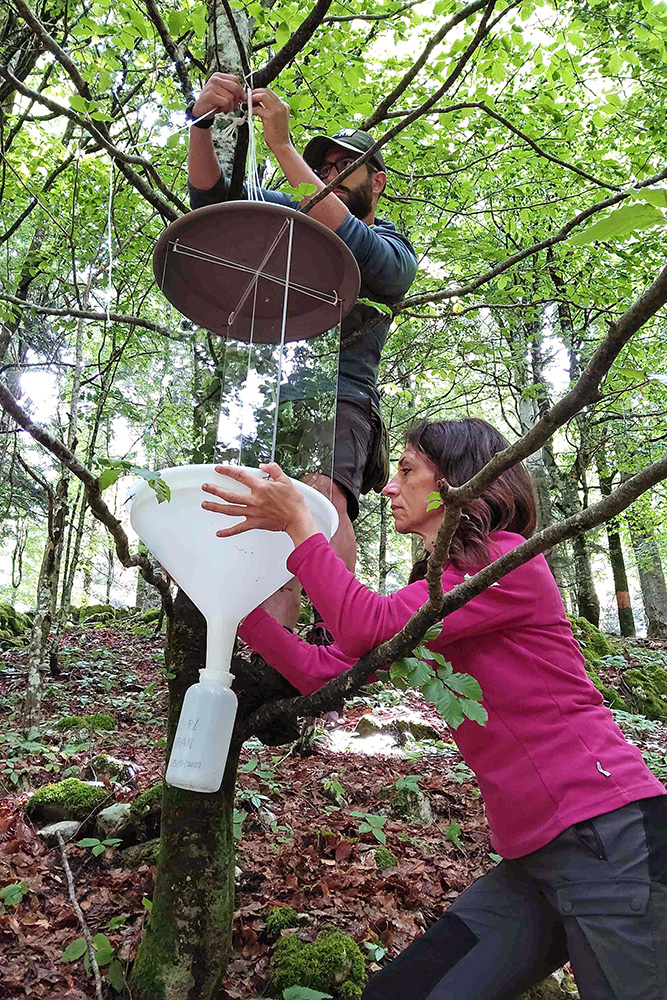
Three 'window traps' have been placed within each SHS to monitor the presence and abundance of saproxylic insect species, particularly beetles. Special monitoring is planned for two beetles of great conservation interest, Lucanus cervus and Rosalia alpina. The European stag beetle (Lucanus cervus) is the largest saproxylic beetle in Europe (an adult male can reach up to 9 cm, including the conspicuous mandibles), whose populations are linked to mature deciduous forests, especially in oak forests with dead wood on the ground; included in the Habitats Directive (on the conservation of natural habitats, fauna and flora) it is considered a flagship species for the conservation status of forests.
The Rosalia alpina, also listed in the Habitats Directive, is a medium to large beetle (up to 4 cm including antennae), associated with forests in cool, low humidity conditions (generally beech) with the presence of senescent, dead or partially dead trees exposed to the sun. Its bright colors, bluish-gray with black spots, and long antennae make it one of the most beautiful European beetles.
In the following years aimed at monitoring insects, a study will also be carried out to verify the presence in the Cansiglio Forest of another fascinating saproxylic beetle, Osmoderma eremita. The hermit beetle, also known as the Russian leather beetle, is related to old hollow trees and included in the Habitats Directive. It has a brownish-brown color and the adult male emits a strong odor that can be perceived by humans several meters away and vaguely resembles leather; this odor is associated with the production of a pheromone that serves to attract females. Finally, targeted investigations will be carried out into other taxa such as Aradidae and bugs of interest to forest ecology.
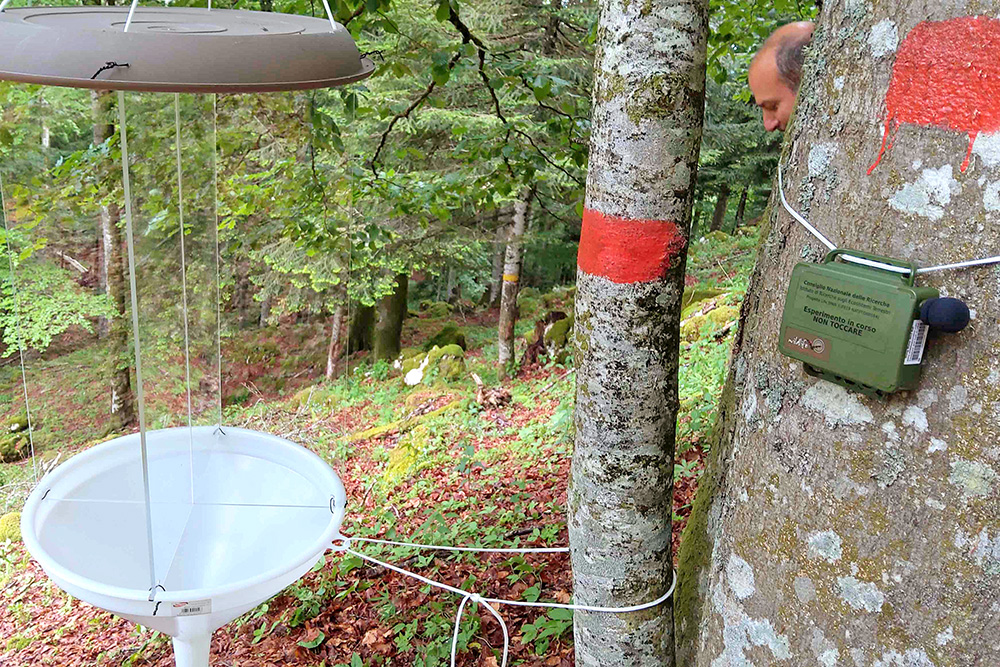
Regarding the monitoring of bats and birds, special devices have been installed to automatically record birdsong and ultrasound emitted by various bat species during their foraging activity. The recorders will be active at night and in the early morning. The recordings will then be processed by the experts, by specific software, to verify the presence of the project's target species, such as the black woodpecker and the Eurasian pygmy owl, for the birds, and some bat species such as the barbastelle and the noctule.
